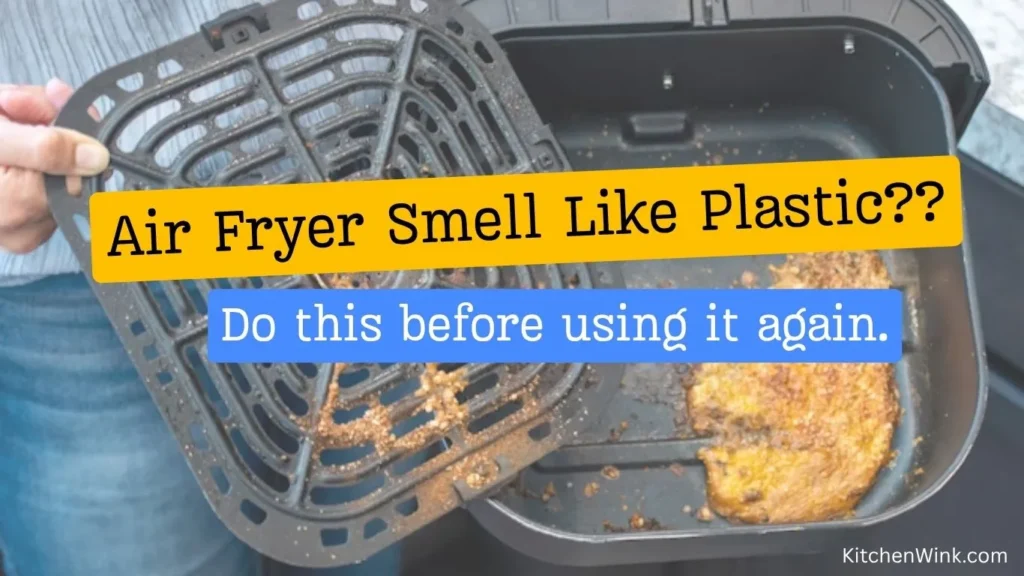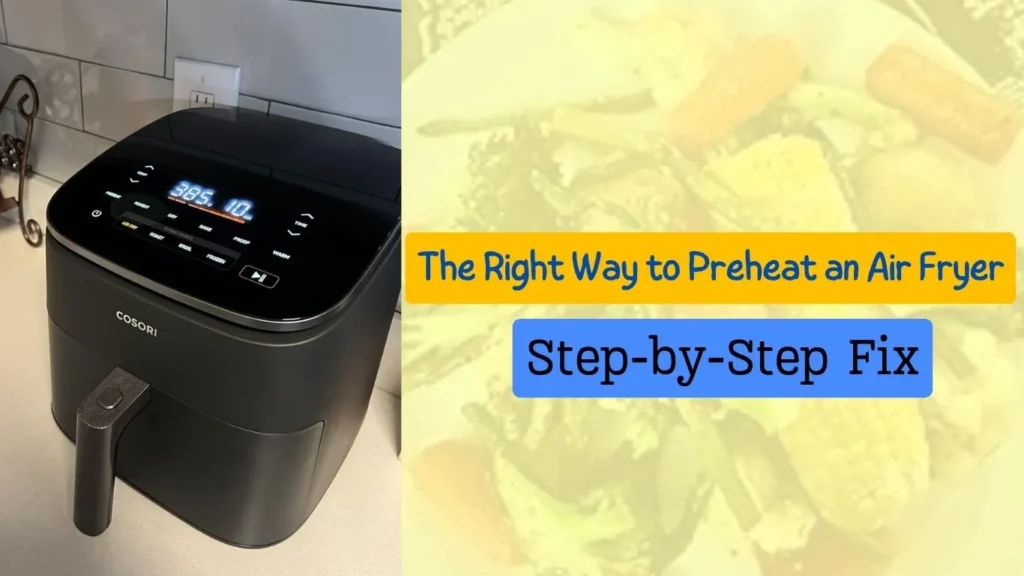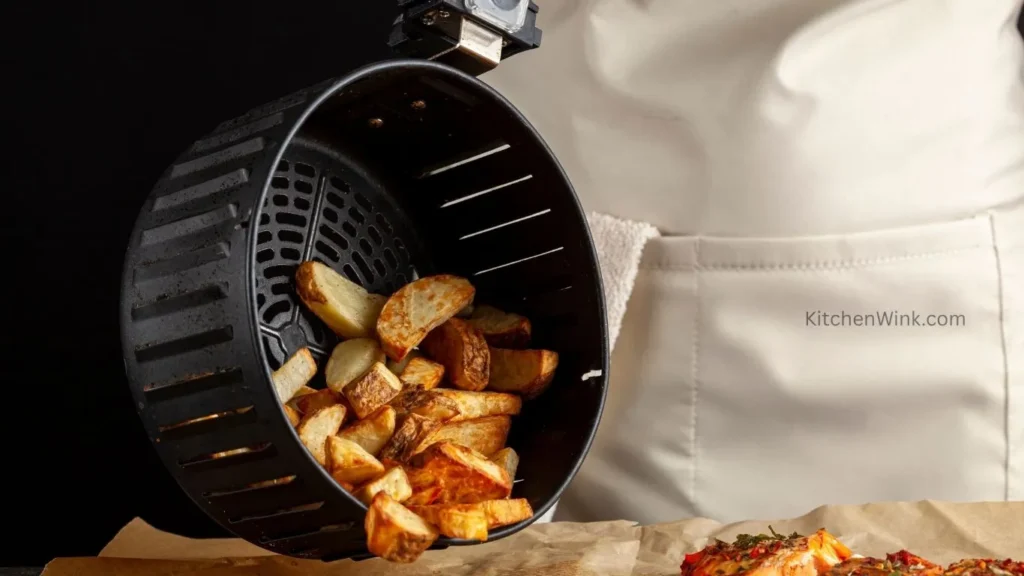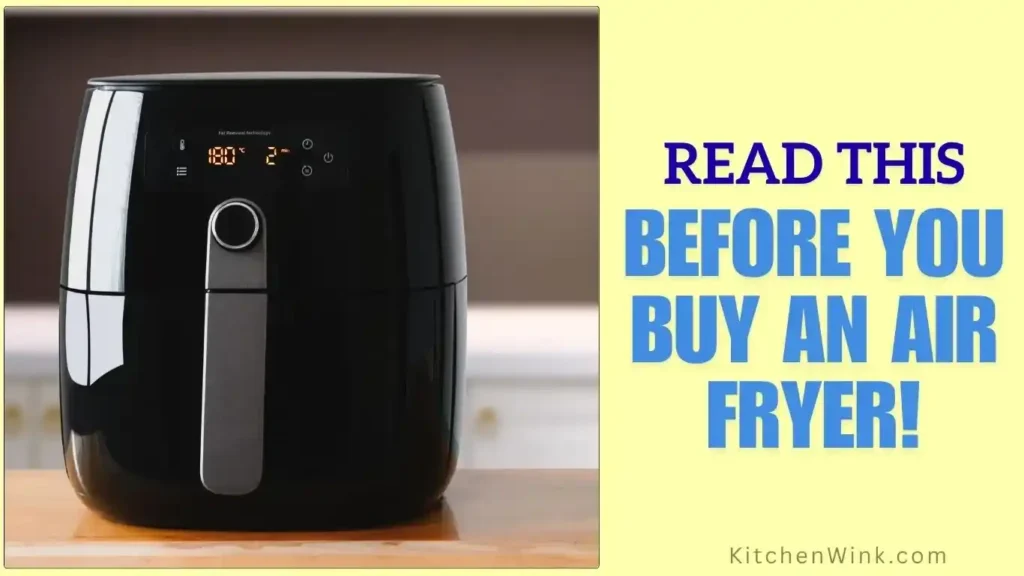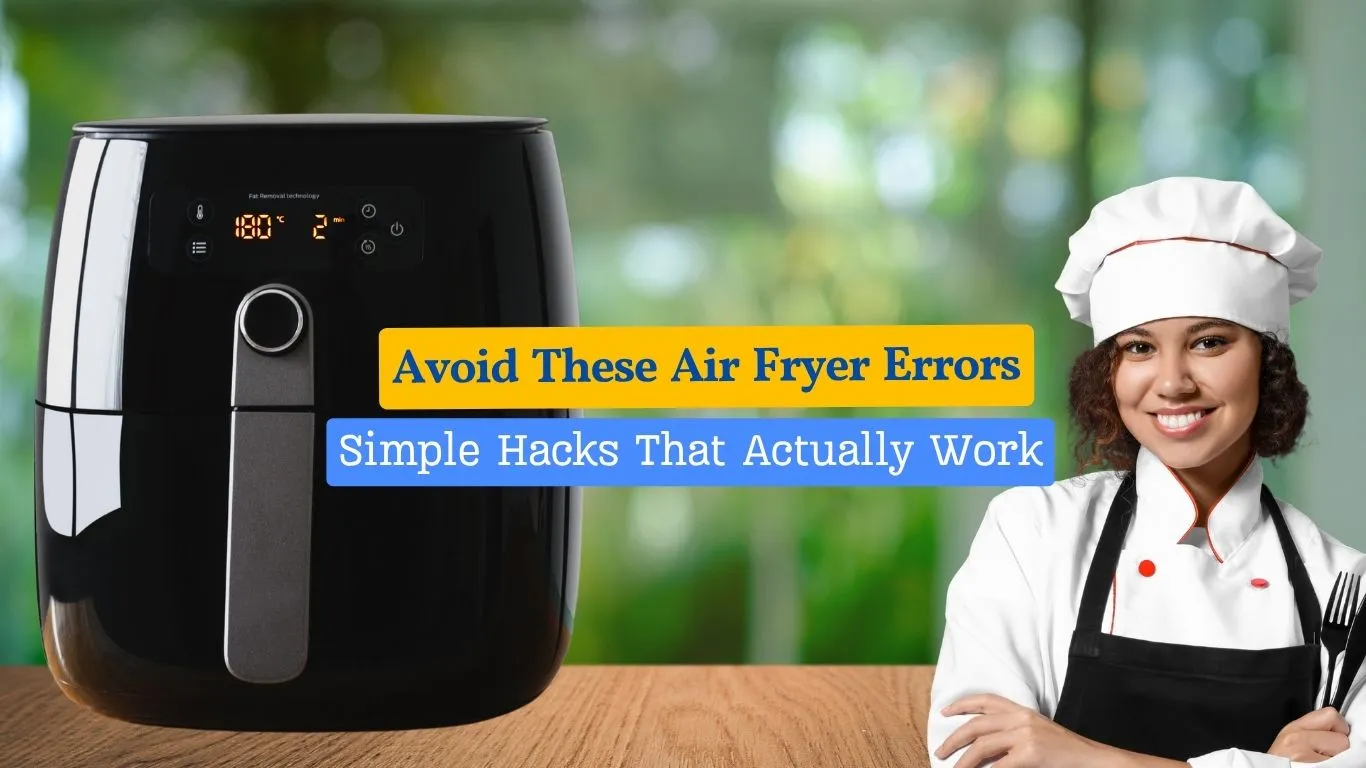
Air fryers have transformed the way we cook. They let us make crisp food fast, with much less oil. I love how fast and convenient they are. But, like with all new tools, there are some things that can trip you up. I’ve run into a few of these myself, and they can be a real pain.
In this post, I’ll share what I’ve learned from my own use. I’ll also mix in tips from others who know their stuff. That way, you avoid guessing and get it right from the start. Let’s take a look at what not to do, so your air fryer works its best every time.
Common Air Fryer Mistakes to Avoid
1. Not Preheating the Air Fryer
Many people skip the important step of preheating their air fryer. I used to skip it too when I first got mine. But when I didn’t preheat, my food cooked all wrong. Some parts were soft, some got too crisp. It just didn’t turn out right.
I later found that preheating helps heat the basket fast and even. This helps food cook the same all the way through. Experts, including the USDA, recommend preheating for even cooking and food safety, especially when handling poultry or frozen meats. It helps kill bacteria by ensuring the food cooks through evenly. They say preheating helps keep food from turning soft or wet.
Usually, just three to five minutes is enough. It’s a small step that makes a big change in how food comes out.
Quick Tip: Warm up your air fryer for a few short minutes. It helps a lot when you cook wings, fries, or thin cuts of meat. You’ll get a better crunch and more even cooking each time.
2. Crowding the Basket
When I first used my air fryer, I made a mistake. I overloaded the basket trying to save time. But that backfired fast. The food came out soft in some spots and raw in the middle. My fries looked crisp but were mushy inside.
I found out that air needs space to move. If food is packed tight, the heat can’t spread right. That means food won’t cook the same all over.
Quick Tip: Give food some room, like folks at a party. Leaving some space helps food cook faster and get crispy.
3. Using the Wrong Temperature Setting
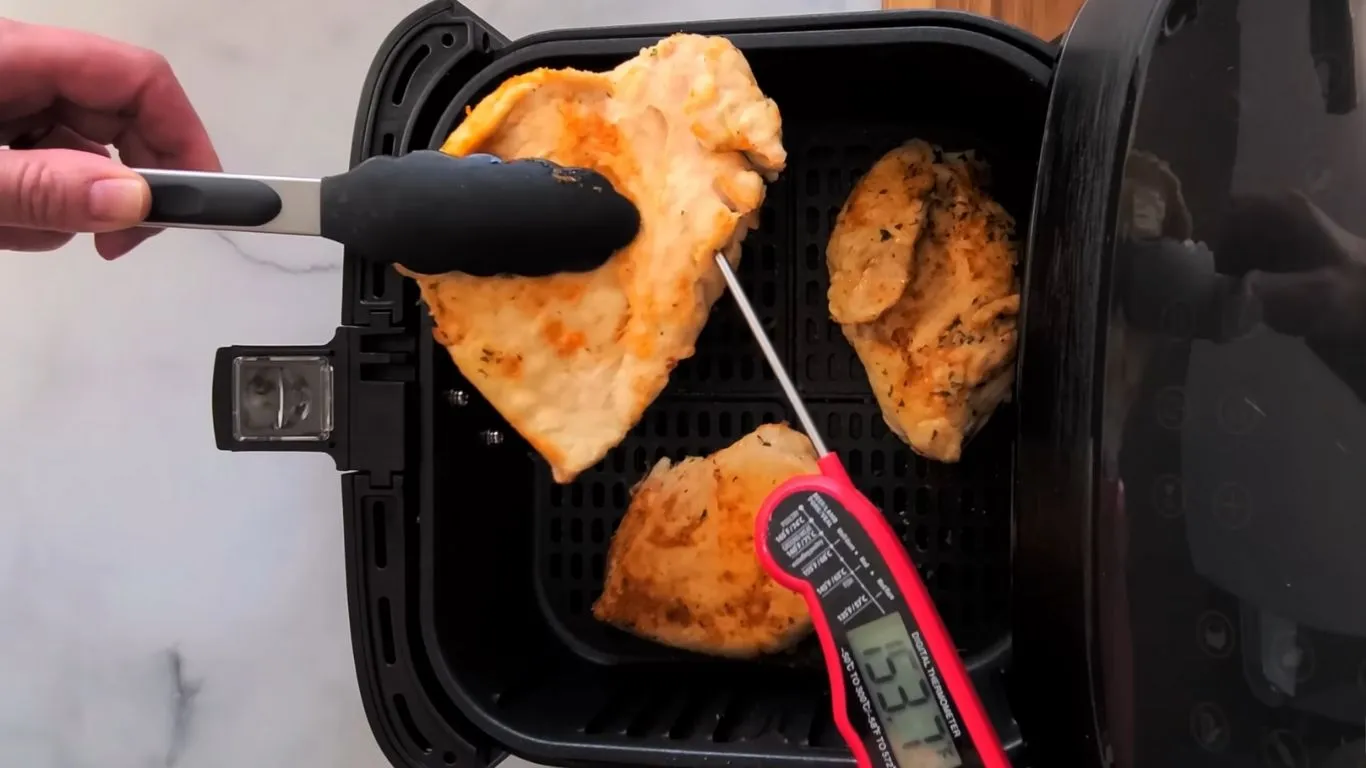
Using the wrong heat can mess up your food fast. I once cooked wings at a low temperature and it didn’t go well. They came out soft, pale, and kind of chewy. Another time, I set the heat too high and burned them.
I found out each food needs the right temp to cook well. It’s not the same for wings, fries, or frozen food. You have to test and learn what works best for your air fryer.
Quick Tip: Set it to 375°F for crispy wings. For frozen vegetables, try 380°F for best results. Adjust depending on your air fryer’s power.
4. Not Using the Right Accessories
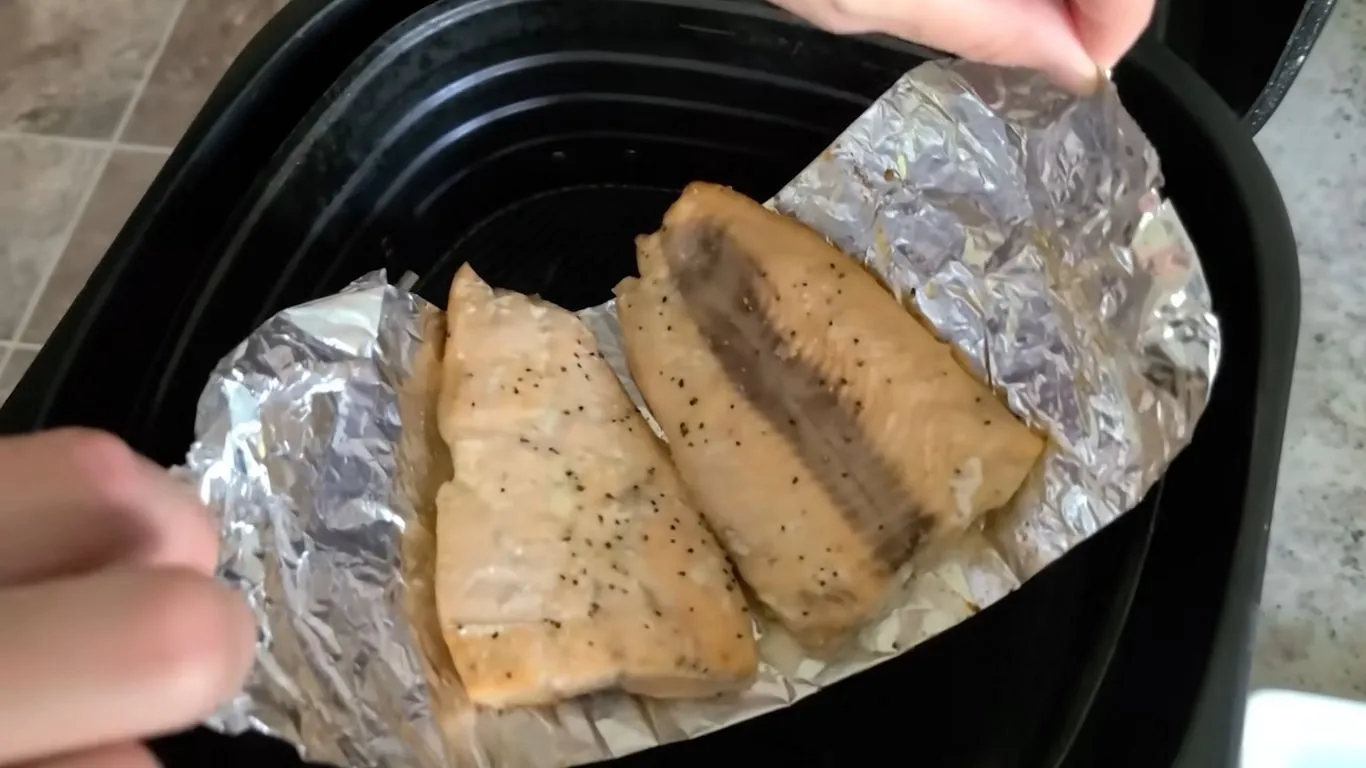
If you use your air fryer with no tools, you miss out. I found that out fast. I tried foil and mats made for air fryers, and they helped a lot. Food didn’t stick, and cleanup was way less work.
I also got a rack to cook more food at once. It let the hot air move better, so the food came out crisp and cooked right.
Quick Tip: Use non-stick mats or racks made for air fryers. They help stop food from sticking and let air move more, so your food turns out crisp.
5. Cooking Wet-Battered Foods
This was one of the biggest mistakes I made early on. I tried to air fry battered fish. The batter stayed soft and slid off the food. It didn’t cook right and made a mess in the tray. Wet batter just doesn’t work well in an air fryer. It needs hot oil to set and crisp.
Quick Tip: Try dry breading like flour or crumbs. You can also bake wet-battered foods for a few minutes first to set the coating.
6. Using Too Much Oil or Not Using Oil at All

Oil can make or break your air-fried food. I’ve added too much before—things turned greasy, and cleanup was a pain. I’ve also skipped oil, and the food came out dry and soft. I found out that just a light spray is enough for that golden look.
Quick Tip: Lightly mist with oil instead of pouring too much. Just a quick spray helps food crisp up without the grease.
Solving Common Air Fryer Problems
1. Food Getting Stuck or Burning
Food sticking to the basket or getting burned is a real pain. I made this same mistake once while cooking chicken breasts. The top was burned, but the middle stayed raw. I didn’t spray any oil, and I forgot to check while it cooked. A quick spray of oil helps food not to stick. It also helps brown the food the right way. I learned it’s smart to check your food halfway through cooking. That small step can stop it from burning or drying out.
Quick Tip: Spray both the food and the basket with oil before cooking. Check on your food partway through to stop overcooking or burning.
2. Food Not Getting Crispy
When food turns out soft, it’s often from too much steam. I made potato wedges once, and they came out soggy. I had packed too many in the basket at once. When food is stacked tight, the hot air can’t move well. That means some parts cook while others stay soft. I also learned to pat food dry before I cook it. Moist foods find it tougher to become crispy. The right heat helps, too. Don’t set the temp too low if you want a good crunch.
Quick Tip: For crispy fries or wings, cook them at 375°F to 400°F. Make sure there’s space between each piece so air can move.
3. Smoke or Unpleasant Odor
One time, I cooked bacon, and smoke filled my kitchen. The smell stayed long after I was done. It turns out the grease had burned in the bottom tray. Fatty foods drip oil, and that can cause smoke fast. I now clean the tray and basket after each use. That helps stop smoke and keeps the fryer fresh. I also keep the heat a bit lower for foods with lots of fat. That way, I don’t burn the grease and stink up the place.
Quick Tip: Clean your air fryer each time you use it. Lower the heat for fatty food to cut smoke and smell.
Air Fryer Adjustment Tips for Better Results
1. Understanding Air Fryer Wattage and Temperature
Wattage plays a big part in how your air fryer cooks food. A high-watt model cooks fast, but that also means food can burn fast. When I first got my air fryer, I didn’t consider its wattage. I made fries the same way I saw in a video, but mine burned. The fryer had more power, and the heat was just too much. Since then, I’ve learned to check the watt level and lower the cook time if needed. Small changes like this help a lot.
Quick Tip: If your air fryer has high wattage, cut the cook time a bit. For low-watt models, add a few more minutes for crisp food.
2. Cooking Time Adjustments for Frozen Food
It can be tricky to cook frozen food in an air fryer. I once cooked frozen chicken tenders like they were fresh ones. The outside looked done, but the middle was still cold. That’s when I found out frozen foods need more care. You can either let it thaw first or cook it longer on lower heat. I now check the size and add more time when needed. It helps the food cook through without burning the outside. Taking a few extra steps can save a meal.
Quick Tip: For frozen food, add 5–10 extra minutes based on how thick it is. Thawing first also helps it cook even and crisp, not soggy.
User Expectations vs Reality
One of the biggest things I’ve learned is to not expect too much too soon. When I first got my air fryer, I thought it would fix every meal. I figured it would make all food crisp and perfect every time. But that’s not how it works, at least not right away. Some food, like frozen items or thick wings, takes more time and care. I’ve ended up with soggy fries and half-cooked wings more than once. At first, I thought I did something wrong. But the truth is, it takes a bit of trial and error. Each model cooks a bit different, and each food needs its own plan. That’s part of the process—it’s fun and you learn as you go.
Quick Tip: Keep your hopes real. Air fryers work well, but they do have limits. Test things out, stay patient, and soon you’ll know what works best.
Cleaning and Maintenance Tips
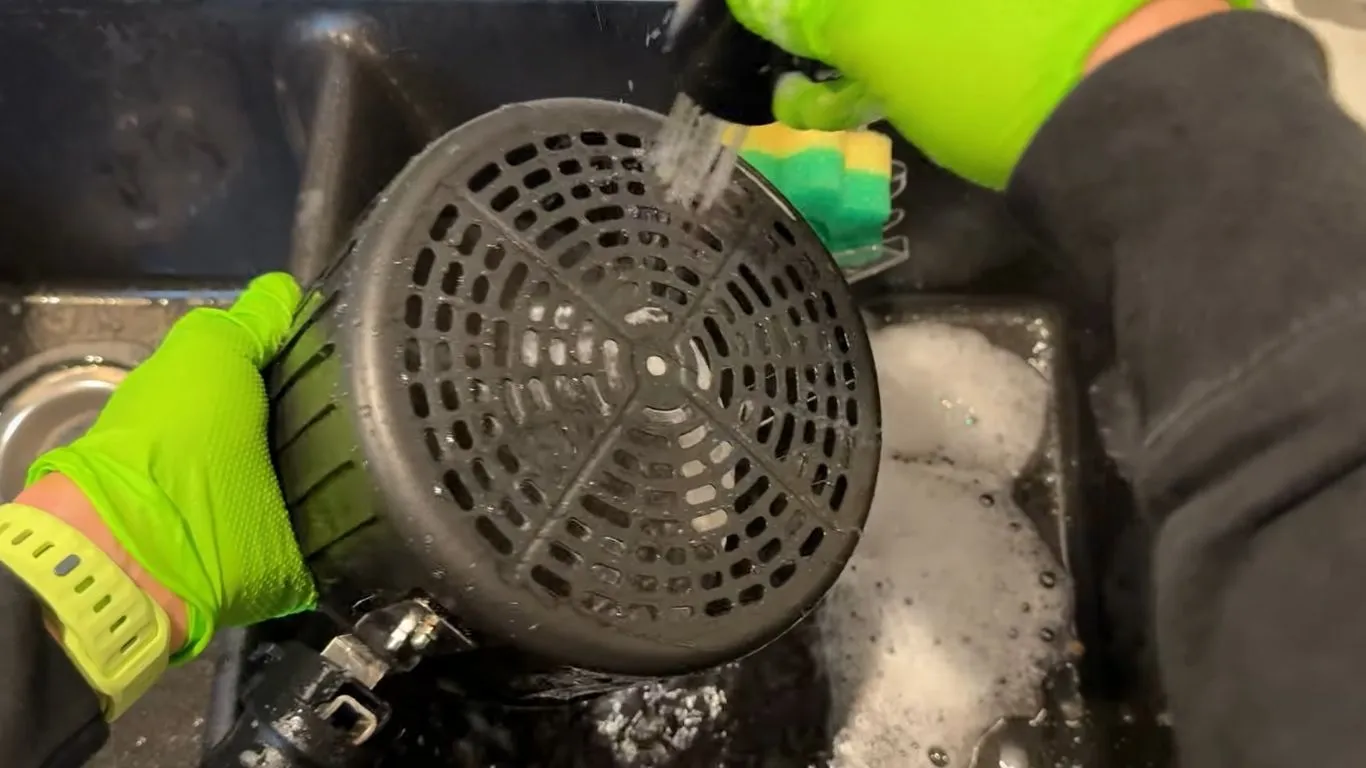
Keeping your air fryer clean is crucial for it to work properly. I didn’t do this at first, and grease buildup caused unpleasant odors. My food didn’t taste fresh, either. That’s when I knew I had to clean it after each use.
Now, I wipe it down every time. First, I let it cool. Never clean the air fryer while it’s still hot or plugged in. That can be unsafe.
Next, I wash the pan and basket. I clean mine with warm water, soap, and a soft sponge. A brush helps with spots where grease hides. I don’t scrub too hard. That way, I don’t harm the parts.
I also clean the top part. That’s where the heat coil is. A soft cloth with warm water works fine. No need for strong spray or rough tools.
Last, I dry all the parts. I wait till it’s fully dry before I put it back. That keeps rust from forming.
Quick Tip: Wipe off grease after each use. Dry all parts well. This helps your air fryer stay clean and your food taste good.
Conclusion
Air fryers are now in many U.S. homes. They make food fast and crisp. But like any tool, they take time to learn. I’ve made some of the most common air fryer mistakes. I’ve also learned how to fix them.
Things like not preheating or stuffing the basket too full can ruin a meal. But with time, I found ways to cook better. What helped me most was to stay patient and test things out. That’s how I learned what works best for each food.
Quick Recap of Key Tips:
– Always preheat your air fryer for even heat.
– Don’t pack the basket too full—air needs space.
– Adjust the temperature and time depending on what you’re cooking.
– A little oil helps make it crispy without making it greasy.
Now it’s your turn. I’d love to know what worked for you. What went wrong? What tips helped? Share your air fryer story in the comments. Let’s learn from each other. We all have a few tricks to share!
FAQs: Common mistakes to avoid when using an air fryer
Can I Use Foil in an Air Fryer?
Yes, you can use foil. But don’t block the air flow. Hot air needs space to move, so place the foil in a way that lets air flow through. This helps cook the food right.
Why Does Air Fryer Smoke?
Smoke often comes from grease. Fatty foods can drip and burn. I’ve seen this happen when I cooked bacon. To stop smoke, clean the air fryer well. Make sure no oil or bits are left inside.
How Do I Avoid Overcooking Food in the Air Fryer?
Watch the time and temp. I once set the heat too high and burned fish. A lower temp works best for some foods. Also, check your air fryer’s wattage. That can change cook time.
Can I Reheat Food in an Air Fryer?
Yes, it works great for that. I reheat pizza all the time—it stays crisp. Use low heat and short time. This helps it heat evenly without drying out.
What Can Damage an Air Fryer?
Heat that’s too high or bad tools can cause harm. Not cleaning it is a big risk too. I once left crumbs in mine and it smoked the next time. Always wipe it down and don’t use strong soaps.
What Are the Risks of Air Fryers?
Air fryers are safe when used right. But they get hot, so be careful. Burns can happen if you touch hot parts. Keep it clean and follow the steps in the user manual.
What Types of Foods Should I Avoid Cooking in an Air Fryer?
Skip wet batters—they don’t cook well and can drip. I tried beer-battered fish once and it made a mess. Foods with too much water, like soft greens, also don’t do well.

Hi, I’m Raju Dey — a food lover with a degree in Culinary Arts from El Centro College. I’ve spent 4+ years testing air fryers, blenders, and other kitchen tools in real home kitchens. At KitchenWink.com, I share honest tips and reviews to help you cook smarter. My goal is to give you advice you can trust — based on hands-on experience, not hype.

